Amid the sounds of bombs exploding, fleeing footsteps and prayers, a question lingers: what does a woman take with her when she is forced from her homeland, leaving behind her life and home?
When asked what I brought with me from Artsakh during the mass exodus last September, I answer: my earrings, which imbue me with the symbolism of feeling like a woman even in the most difficult moments. However, I value even more what was brought after my departure at my request. For years, I regularly gave “Khagha Artsakh” handmade wooden toys to my friends’ children in Armenia. My friend’s son Mher awaited them the most. When the road connecting Armenia and Artsakh was closed during Azerbaijan’s siege, the wooden toys promised to Mher and his brother Shant never reached Yerevan. Mher regularly asked his mother why Siranush did not visit, and she explained that an evil dragon was blocking the road. Throughout the blockade, which lasted for nine months and ended in an Azerbaijani attack and mass displacement, I constantly reminded the master toymaker Karen to prepare the toys. He replied, “There is still time, but how will I carry the toys on a closed road?”
As much as the pain of leaving one’s home is universal, each woman experiences it uniquely and takes with her what she deems most important.
When we had to leave Artsakh, I wanted to take the wooden toys that I had promised the children. Amid the chaos and total lack of communication, I found Karen. He could not leave his house, yet I could not leave the toys behind, knowing that no child would play with them. I asked one of the emergency service workers, who were the last to leave Artsakh, to save the toys and bring them to Yerevan.
When Mher found out that I had arrived, his first question to his mother, surprised and happy, was whether Siranush was able to defeat the dragon.
Many women who reached the Artsakh capital Stepanakert barefoot from their villages were unable to save anything, including documents.
Varya Avanesyan, 86, hails from Chartar village of the Martuni region of Artsakh. After Azerbaijan’s attack on September 19, 2023, she was forcibly displaced and settled in Yerevan, where she now lives with her daughter’s family.
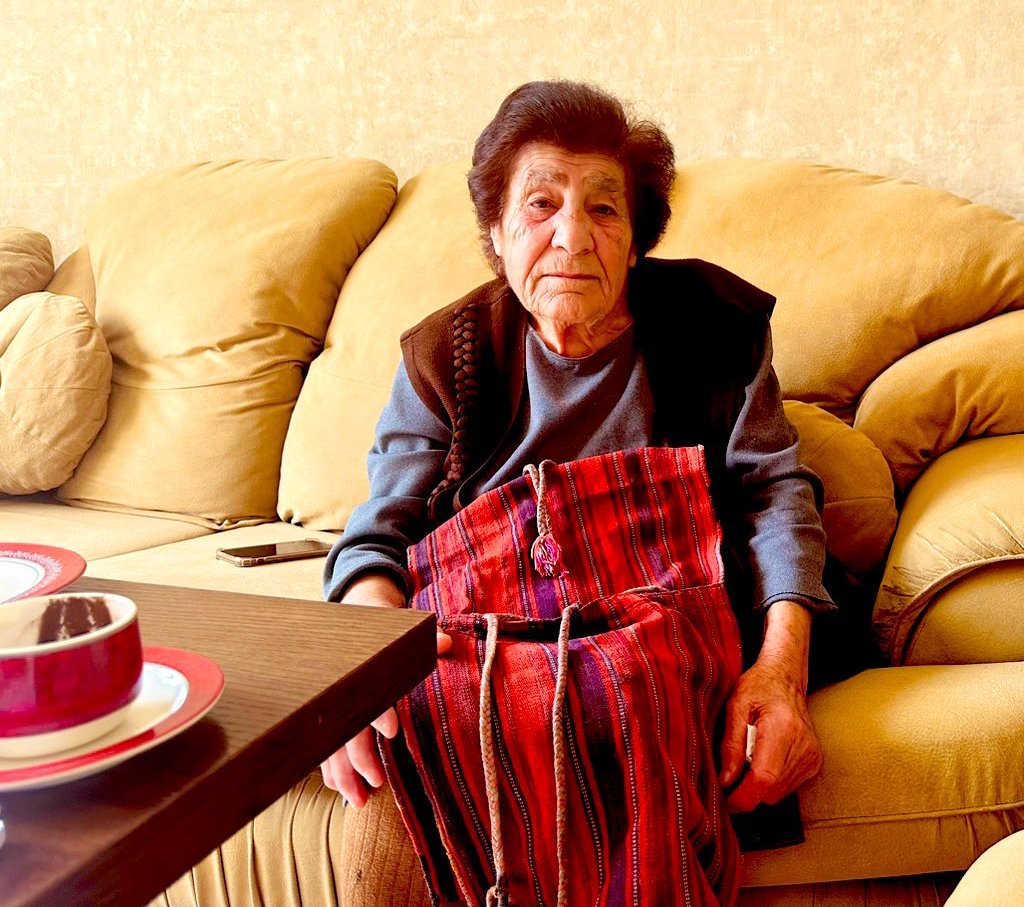
Avanesyan recounted the items she crafted by hand throughout her life that she left behind in her native village. She spoke with special fondness about the khurjin, a traditional bag made by her mother and passed down to her as a dowry that she was able to save. Avanesyan passed down the khurjin to her daughter, with hope that it will reach her grandchildren and great-grandchildren. The khurjin was commonly used in Artsakh cuisine to carry food and can be considered a prototype of eco-friendly bags.
Along with the khurjin, Avanesyan brought a handful of wheat to prepare kurkut, a traditional Artsakh dish. “I have kept it, and I will prepare it when my four children, 13 grandchildren and six great-grandchildren come to the village after the end of the siege,” Avanesyan said.

28-year-old journalist Mariam Sargsyan and her husband were the only couple to be married in Artsakh during the 44-day war in 2020 in Ghazanchetsots Cathedral in Shushi. Now, they live in Yerevan with their one-year-old daughter, who was born a day before the start of the blockade in December 2023.
During the war, Ghazanchetsots Cathedral was damaged due to bombing by Azerbaijan. The wedding served as a prayer that one day they would return to restore the church and rebuild Shushi.

When she left Artsakh, Sargsyan brought with her a small picture of Ghazanchetsots, which she received as a gift on the occasion of her wedding. For Mariam and her husband Hovik, it holds special significance for several reasons.
“Made from flower petals, it is difficult to say how many dried leaves were woven to form the most beautiful church, but it is clear that the work was done with great care. It was given to us after being sold at an auction, and most importantly, it became a hoosh, the most precious memento of a risky marriage. We are used to receiving inheritances, but leaving an inheritance is hard and rare,” Sargsyan said.
After the war, the picture hung in their house in Artsakh, and many people admired it. “During the catastrophic events of September, I packed this picture in my suitcase along with my daughter’s first clothes, and I feared it would break along the way. The Ghazanchetsots woven from flower petals is the symbol of our marriage for me, and I want this picture to be passed down from generation to generation so that one day they will encounter the real Ghazanchetsots,” Sargsyan said.
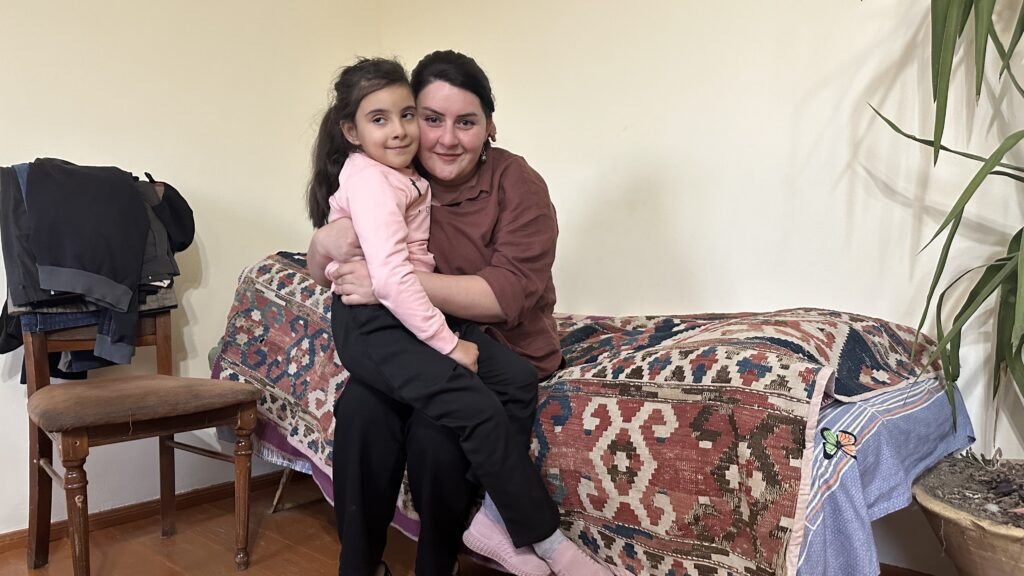
Lilit Sargsyan, a single mother from Askeran, Artsakh, now lives in Khachpar village in the Masis municipality of Armenia with her daughter and her parents. Sargsyan is a history teacher at the local high school, but she keeps her most important lessons for her six-year-old Luseh – the stories of Artsakh, their home in Askeran and their family’s dynasty. Those memories and stories are conveyed in their family photos, the most precious of which she was able to bring with her. Sargsyan also brought a cherished accessory, earrings made with pennies from her great-grandmother’s costume headdress.
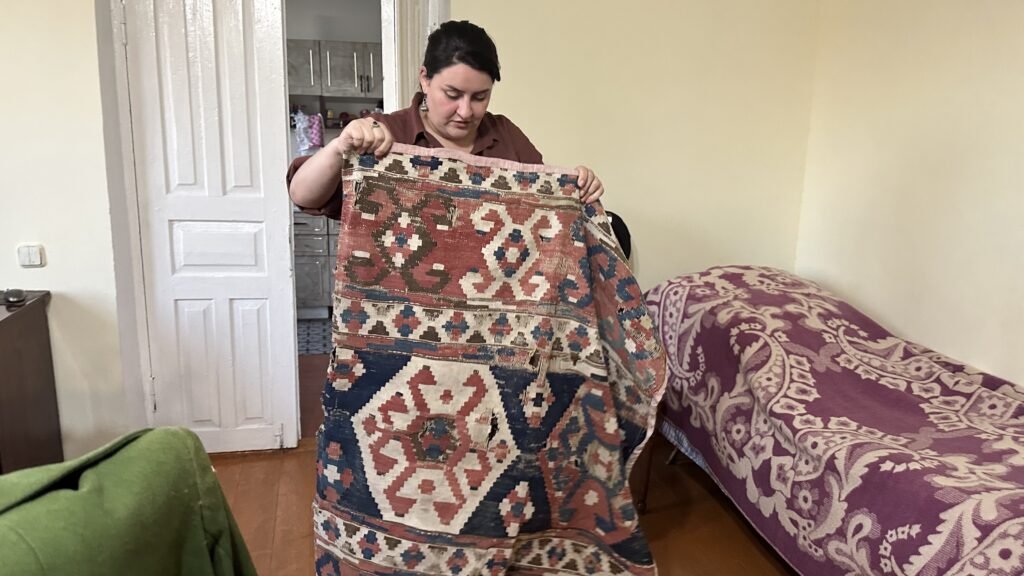
“These earrings, which were part of my grandmother’s mother’s costume, are my sacred things, as well as my great-grandmother’s carpet. I took it from my grandmother’s village and washed it, and it has always been with me. I also took a few clothes for my daughter and myself. I would even leave behind my daughter Luseh’s clothes and things, but never the piece of my great-grandmother’s carpet,” Sargsyan said.
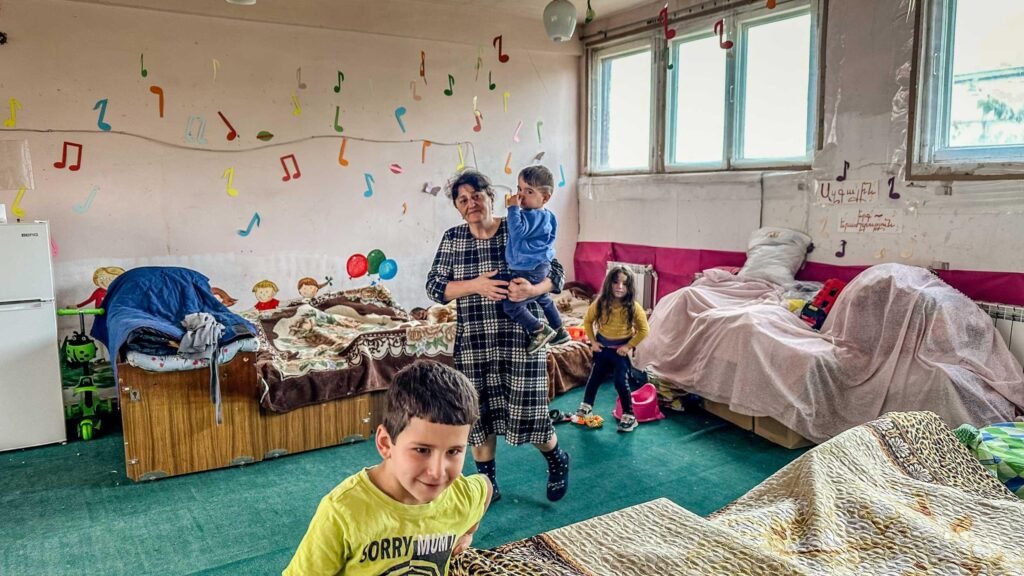
56-year-old Alvard Dadayan is from the village of Aygestan in the Askeran region. When Azerbaijan attacked Artsakh on September 19, 2023, she and her family were unable to take anything with them when they left the village. Arriving in Armenia after spending three days on the road, they found refuge in a non-functioning kindergarten for several months. Dadayan could not hold back tears when she shared that she could not even bring a picture of her husband, who was martyred in the first Artsakh War, and had to leave it by the side of the road. “We were told that the Azerbaijanis check cars at the border, and any item with military symbols, even a picture, would cause problems. So, to avoid endangering the lives of my sons, I simply hid it under a rock,” Dadayan said.
35-year-old Karine Petrosova worked in the field of internet communication in Stepanakert. She tried to use humor to overcome the darkness and bitterness of the blockade. With her humorous illustrations, depicting the endless queues and deprivations, she brought smiles not only to the people of Artsakh but also to fellow Armenians on the other side of the blockade. Now, she rents a place in Yerevan, where she lives with her family. Petrosova gets emotional talking about what she left in Artsakh and what she brought with her.
“Those who have embarked on the path of forced displacement would confirm that during those days, you don’t think about taking anything, because there is chaos not only outside but inside you. An incomprehensible brake is activated within you, and you walk through your yard, your city, without a word and try to memorize every road and every stone,” Petrosova said. “Now, far from Artsakh, almost every day, everything awakens memories in me, mentally taking me home, and I say to myself, ‘Why didn’t I take this item or the other one?’ But when you are still in your homeland, there is no time or desire to think about it. I had almost seven days to collect some things, clothes, but I didn’t even manage to dismantle my bookcase, which I had collected for years.”
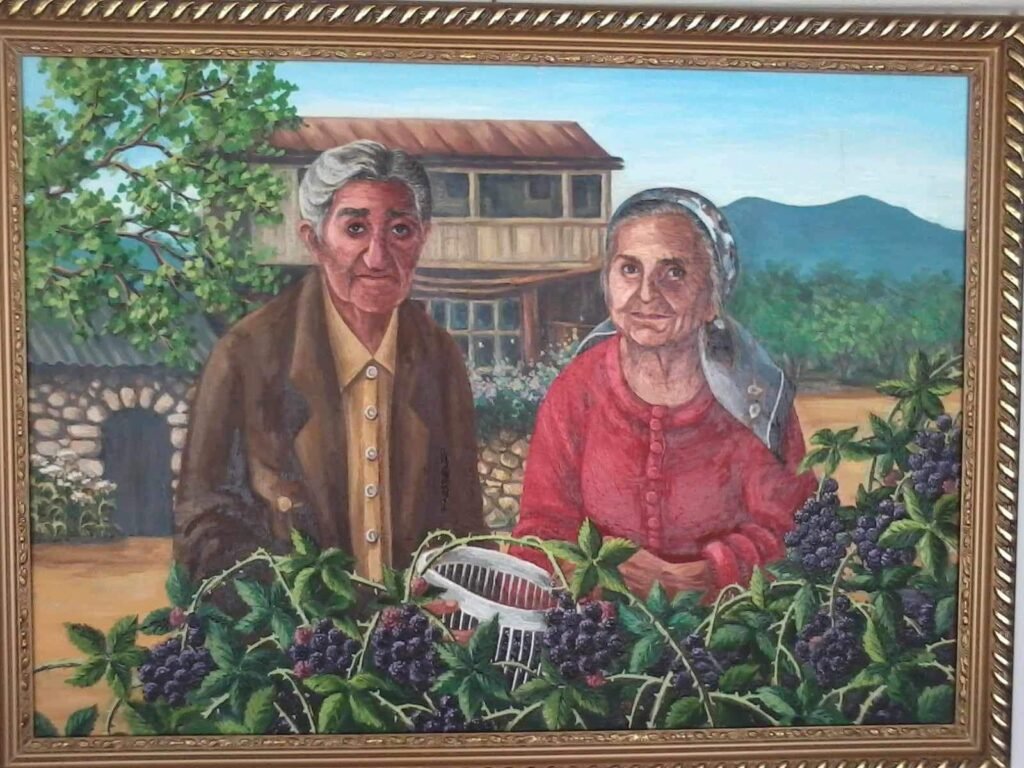
However, there was one thing she couldn’t leave behind. “Behind my dastiarakutyan [education], my every success, are my grandparents, who did not spare their health and resources to help my mother. My 80-year-old grandfather and 72-year-old grandmother worked day and night in the garden so as not to spend too much on food, ensuring there would be something to eat in the winter,” Petrosova said.
“When they passed away, I commissioned a painting depicting my grandmother and grandfather, who gave meaning to my life. In that picture, the hut where they lived and the house they built are well depicted. For years, that picture, symbolizing the coat of arms of our family, hung in the best corner of our home and kept us warm, even in the last months [of the blockade] without electricity and gas,” Petrosova said.
That picture is the only valuable item that Petrosova brought with her. Now it hangs on the wall of her rented apartment.
“It is the most precious thing that I have. It reflects my homeland, family, roots and most importantly, love,” Petrosova said.



Beautiful stories of strong Armenian women. I pray they find peace.
Beautiful
What did the Azeri women take when forced out their homes I wonder?